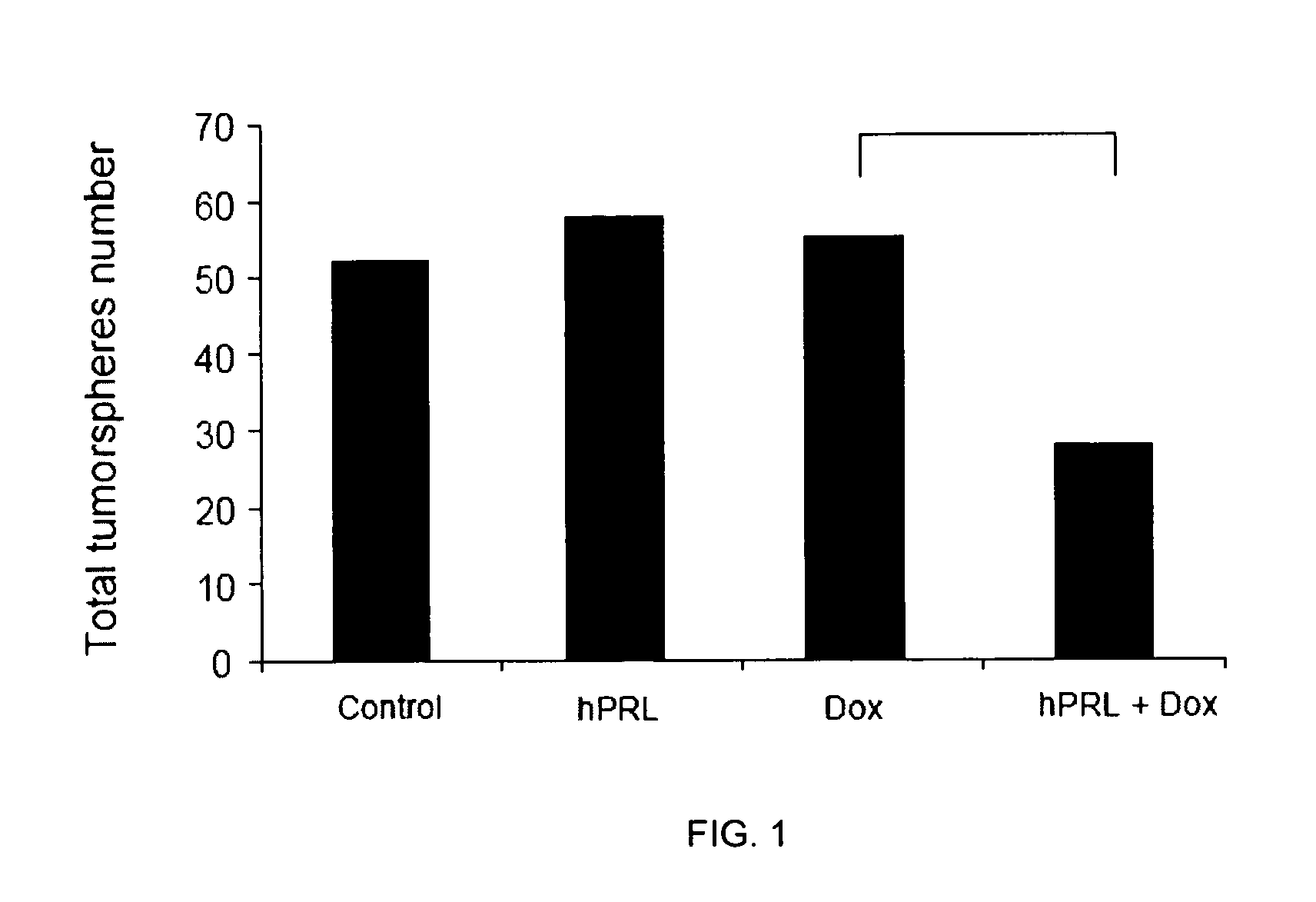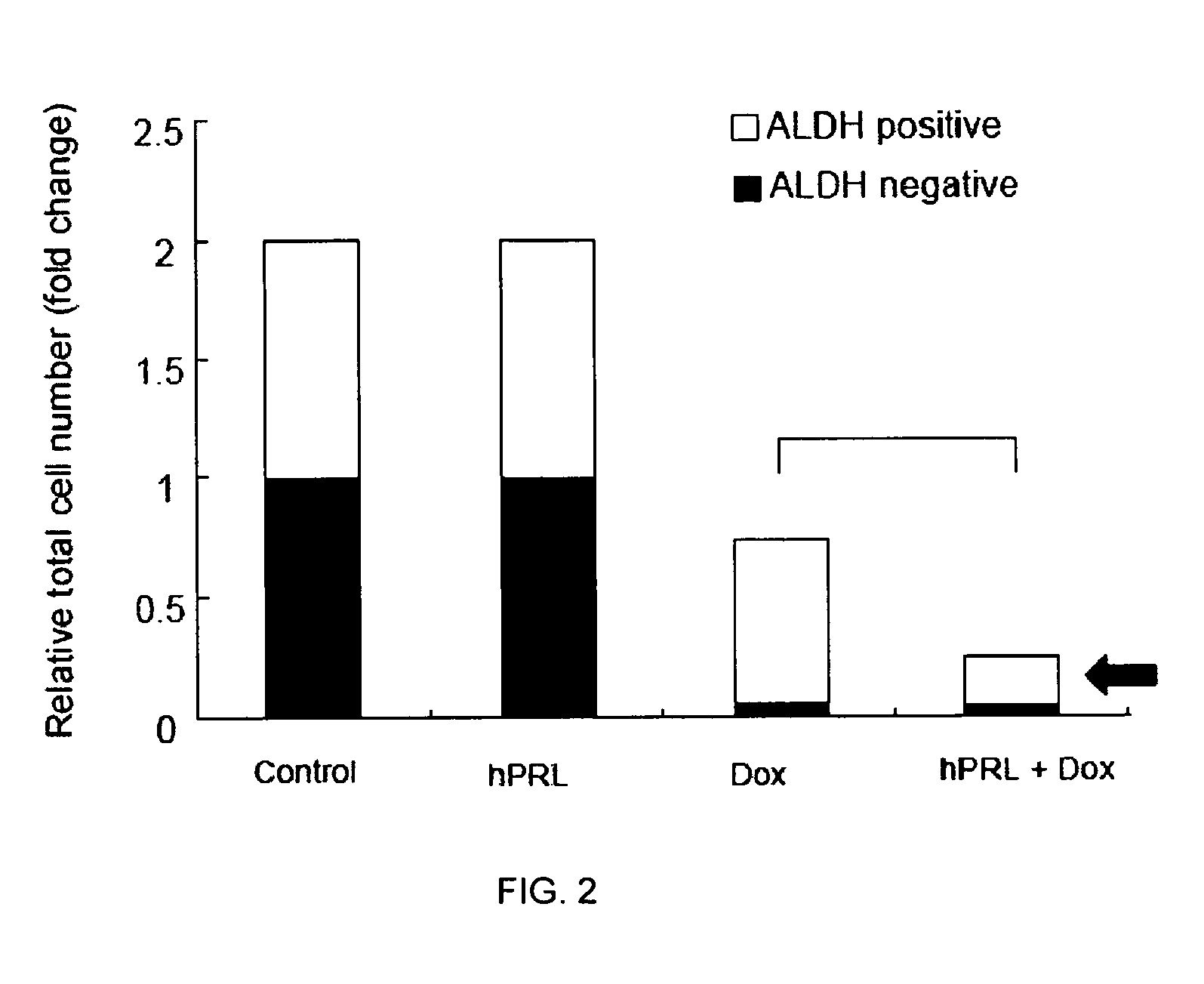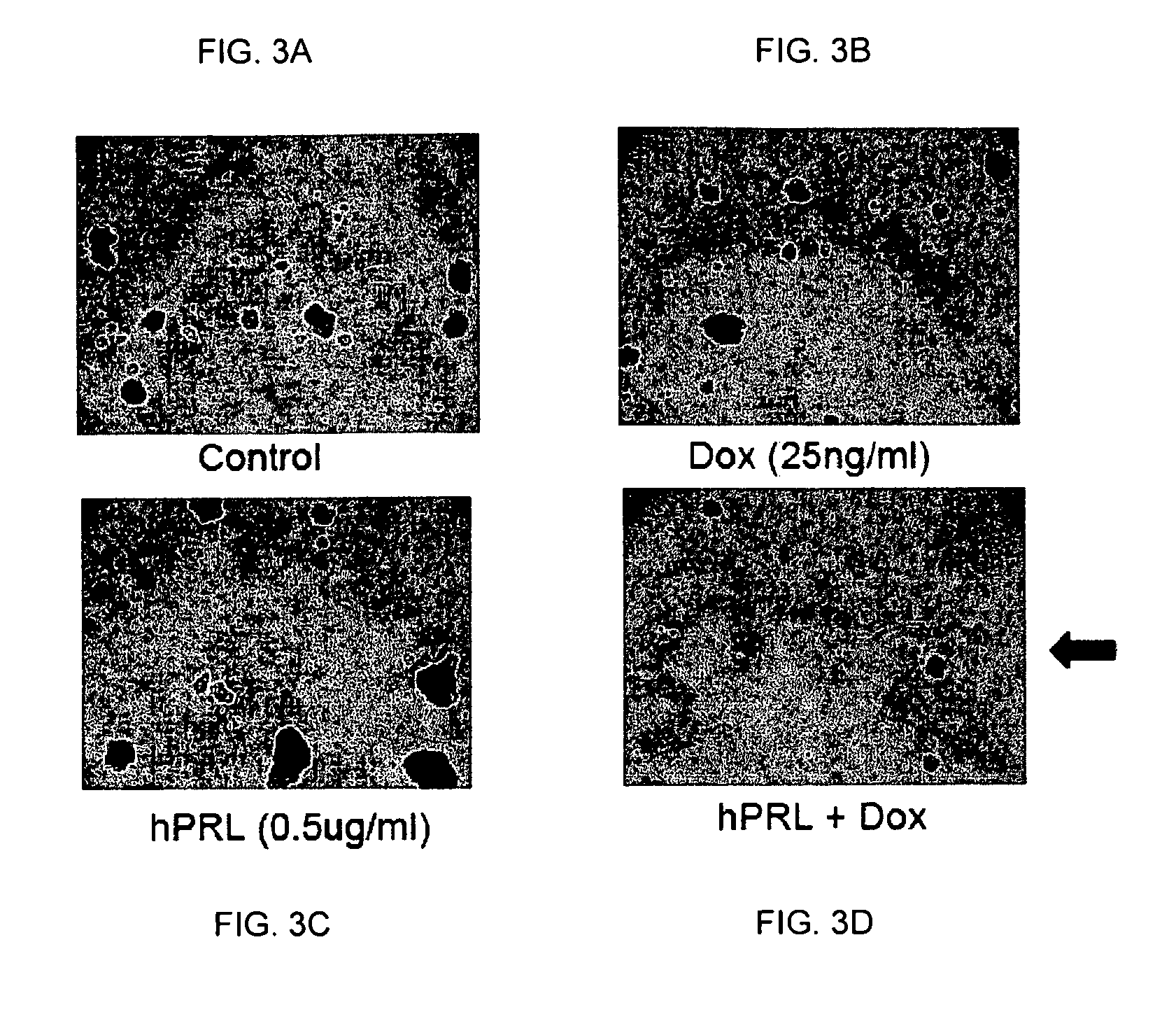Method for sensitizing cancer stem cells to cancer therapy
a cancer stem cell and cancer therapy technology, applied in the direction of anti-inflammatory agents, peptide/protein ingredients, anti-cancer drugs, etc., to achieve the effect of reducing the risk of breast cancer occurrence, reducing the risk of recurrence, and increasing the time to relaps
- Summary
- Abstract
- Description
- Claims
- Application Information
AI Technical Summary
Benefits of technology
Problems solved by technology
Method used
Image
Examples
example 1
Co-Treatment of Human MCF-7 and Mouse MMTV-neu Cells and with Doxorubicin and hPRL
[0054]MCF-7 human breast cancer cells and primary mouse breast cancer cells isolated from MMTV-neu transgenic mice were used in this study. Tumor sphere formation assay and aldehyde dehydrogenase (ALDH) activity measured by flow cytometry were used to measure the functional response of the CSCs after 11 days of co-treatment with human prolactin (hPRL) and doxorubicin (Dox).
Methods
[0055]MCF-7 and MMTV-neu cells were cultured by standard methods known in the art. Briefly, unsorted MCF-7 cells were plated in ultra-low attachment plate (Corning Inc, Corning, N.Y.) at a density of 5000 cells / ml in serum-free Dulbecco's Modified Eagle Medium-F12 (DMEM-F12) supplemented with 0.4% bovine serum albumin (BSA), 10 ng / mL of basic fibroblast growth factor (bFGF), 20 ng / ml of epidermal growth factor (EGF), 5 μg / ml of insulin (all from Sigma-Aldrich Co., St. Louis, Mo.). Tumorspheres were allowed to form in 37° C. wi...
example 2
Testing the Combination of Dox and hPRL on Additional Breast Cancer Cell Lines
Methods
[0062]Three breast cancer cell lines are used in this assay: two human breast cancer cell lines, MCF-7 (ERhigh, HER2low) and SKBR3 (ERlow, HER2higg), and one mouse breast cancer cell line that was established from HER2 / neu transgenic mice (McNeuA). After establishing the dose response curves, all three cell lines will be used for two in vitro studies. The cells will be treated with a standard chemotherapeutic drug, doxorubicin (Dox) alone (Max or IC50) or in combination with hPRL (Max or IC50).
[0063]First, the functional response of CSCs is measured by standard colony formation and tumorsphere formation assays after 7- and 14 days of treatment using methods described above in Example 2.
[0064]Next, the CSC population is measured by two sets of the stem cell markers, aldehyde dehydrogenase (ALDH) and CD44high / CD24low after a 12-, 24- and 48 hours of treatment using flow cytometry methods as described ...
PUM
| Property | Measurement | Unit |
|---|---|---|
| size | aaaaa | aaaaa |
| density | aaaaa | aaaaa |
| time | aaaaa | aaaaa |
Abstract
Description
Claims
Application Information
 Login to View More
Login to View More - R&D
- Intellectual Property
- Life Sciences
- Materials
- Tech Scout
- Unparalleled Data Quality
- Higher Quality Content
- 60% Fewer Hallucinations
Browse by: Latest US Patents, China's latest patents, Technical Efficacy Thesaurus, Application Domain, Technology Topic, Popular Technical Reports.
© 2025 PatSnap. All rights reserved.Legal|Privacy policy|Modern Slavery Act Transparency Statement|Sitemap|About US| Contact US: help@patsnap.com



